Thursday Oct 30, 2025
Thursday Oct 30, 2025
Thursday, 8 May 2025 03:45 - - {{hitsCtrl.values.hits}}
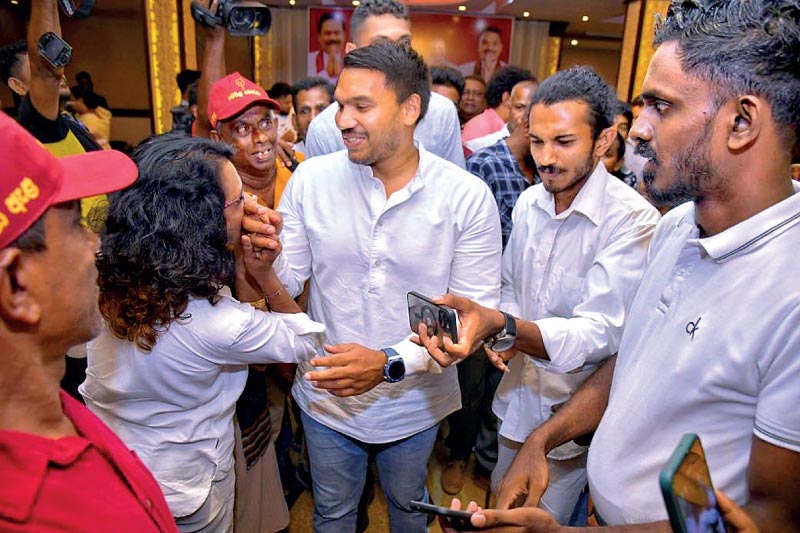
Challenger with chemistry
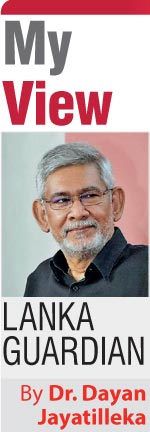 When this column appears, readers would know the results of the May 6th Local Government election, but at the time of its submission, I do not. This gives me the opportunity of expressing perspectival, thematic and strategic political views beyond the results.
When this column appears, readers would know the results of the May 6th Local Government election, but at the time of its submission, I do not. This gives me the opportunity of expressing perspectival, thematic and strategic political views beyond the results.
Now we know the number of agreements signed between the Anura Dissanayake and Narendra Modi administrations. It isn’t 7, it’s 10. It is an unprecedented disgrace and moral outrage that we have to find out even this basic information from Indian media reports, rather than the leadership we elected.
https://www.hindustantimes.com/india-news/what-are-the-10-agreements-india-sri-lanka-signed-during-pm-modis-visit-101743844445480.html#google_vignette
It is important to piece together the jigsaw puzzle: put the 10 agreements together and trace the big picture of what Sri Lanka will be once implementation occurs: a semi-colony.
The Presidency isn’t the problem. Those who point to Trump’s dangerous authoritarian lurches as argument against the Presidential system in the US and Sri Lanka, irrationally and irresponsibly fail to draw systemic conclusions from the more evil, quasi-genocidal conduct of Israel, with its Parliamentary system, proportional representation, strong Prime Ministership without term limits, and dependence on religious-extremist small parties.
Govt. prospects, Opposition stakes
Anura Dissanayake’s aspirational model is the same as that of any Sri Lankan leader who has obtained a 2/3rds majority in parliament: entrench his/her rule, turn the country into a one-party dominant polity, ‘roll up the electoral map’, marginalise the Opposition permanently. AKD sees himself as Sri Lanka’s Modi, with the JVP-NPP as the RSS-BJP (the JVP being the secular version of the RSS) and the Opposition playing the crippled Congress.
Ranking personalities in the Anura administration have given voice to the view that they will remain in office for 15 or 20 years, and my acquaintance, comrade Lal Kantha proclaimed at the May Day rally that “all future May Days will be held under a Maalimaawa administration”.
Whatever the LG election result, I hope for the sake of balance, that the two main tendencies of the parliamentary Opposition, the SJB and the SLPP arrive at a tactical modus vivendi which can lay the foundation for a possible strategic equation, supporting each other to form administrations in those local authorities in which they may be within striking distance of doing so, and forming broad, cross-party Opposition blocs where they don’t.
I also hope that the Left Opposition, the Frontline Socialist Party-People’s Struggle Alliance (FSP-PSA) has performed reasonably well, as some reward for the sterling work they do, championing the national and public interest and ‘speaking truth to power’.
These hopes are not contradictory. Their ‘geometry’ constitutes a triangle, a pattern well-known in the field of foreign policy and diplomacy from which I draw useful strategic concepts for national politics. I believe that it is necessary to pursue a model of tripolar balancing and trilateralism between the two main forces of the mainstream Opposition (SJB and SLPP) and the Left.
‘Tripolar balancing’ means the recognition that there are three political polarities in a given space (the Opposition) and there is a need to balance between them. ‘Trilateralism’ means that the three polarities have to be conceptualised as an equation or architecture, if not a ‘concert’.
I am a social democratic Realist, a ‘critical Realist’ rather than a Pragmatist as President AKD and the JVP-NPP are. A Realist understands the world as it is, in order to transform it, or maintain it, or transform some aspects while maintaining/ managing others. A Pragmatist adapts, conforms, is coopted by, succumbs to the world and its hierarchy as it is, usually in order to preserve his/her position and entrench it. Pragmatism and opportunistic utilitarianism are twins.
Realism tells me the incumbent is almost certain to be a one-term President and the Government a one-term one. Four reasons give this projection a high probability:
 Economics
Economics
 Patriotism/Nationalism
Patriotism/Nationalism
 Experience
Experience
 External turbulence
External turbulence
Let’s start with the third factor: experience, precedent, patterns. Broadly speaking, we’ve been here before. The United Front Government (1970-1977) of Sirimavo Bandaranaike and her Marxist Left allies had a 2/3rds majority in parliament. It won by-elections very late into its term. It hosted an unprecedented number of progressive leaders at the 5th Non-Aligned Conference in Colombo, less than a year before it was buried under an electoral avalanche. It had a massive May Day parade and rally in the very year it was swept out of office in July.
There’s nothing I’m seeing now that weighs against my conclusion of a one-term Government. And even if the rumours are true, no Milinda Moragoda-Rohan Gunaratne project, Lycamobile/Diaspora input, or RSS-Mossad synergy can alter the downstream outcome. The only thing I can’t figure is whether the NPP-JVP will suffer the electoral fate of Sirimavo’s SLFP or the LSSP-CPSL.
Now for the other three reasons. Firstly, the economic crunch. Sri Lanka never re-elected an administration under which its citizens experienced economic hardship and falling living standards. It did re-elect a leader under whom the economy was growing, expanding, and living standards were rising (JRJ 1982). Off-hand I cannot think of a single country in which economic hardship didn’t turf-out the incumbent (e.g., USA 2016, 2020, 2024). In the global South, the trend is more pronounced because the combination of an IMF program and burdensome debt repayment causes excruciating economic pain.
Secondly, patriotism/nationalism. Sri Lanka doesn’t electorally pardon a patriotic leader with international prestige if he/she keeps their living standards low. Sirima Bandaranaike was never reinstated as the country’s leader. However, Sri Lankans are also very resentful when a foreign footprint actually makes itself felt. Once the 10 agreements Anura signed with Modi begin to be implemented, the Sri Lankans will discern the larger jigsaw and begin to feel intruded and imposed upon. This claustrophobia will only be accentuated if Anura signs a similarly ill-considered deal with China.
The world system is being rocked by Trump tariffs, wars in Europe and the Middle East, Indo-Pakistan tensions, and America’s accentuated Cold War against China. A global crack-up is underway.
|
Has policy grasp to exit economic crisis
|
|
Urges greater Indianisation
|
Silindu syndrome
No one understood the Sinhalese better than that most sensitive and progressive of British civil servants, Leonard Woolf. In his masterpiece The Village in the Jungle (1913), he likens the character of Silindu-- pushed to the wall of his mud hut by debtors, slow to discern and anger-- to that of the water-buffalo. When exploitation, oppression, poverty and violation of natural justice take their cumulative toll, discernment dawns and turns to rage. He then charges his oppressors, his roughest justice reserved for the intermediaries, the compradors who wield local power under the foreign Establishment.
In post-Independence Ceylon/Sri Lanka, Silindu’s shotgun is the ballot. Citizen Silindu reserves the deadly blast for the decisive national election. (Gotabaya was a splendid exception).
Sajith, Namal
My prognosis being that the NPP-JVP will be a one-term Government, a Realist analysis must focus on the alternative. There are alternatives, not just a single, obvious alternative unlike the UF in 1970 and the UNP in 1977. In no particular hierarchy or sequence these Opposition alternatives are Sajith Premadasa, Namal Rajapaksa and the Left.
Each has distinctive strengths and weaknesses and can play a specific role better than the others—depending on how things evolve. For instance, acceleration of IMF austerity and debt-driven economic crises meant a leap for Latin America’s Left.
Realistically, what is needed is an openness to permutations and combinations-- and an objective division of labour, unconscious and unacknowledged.
Namal Rajapaksa has the personal appeal, style and a touch of charisma which can make him a very viable Presidential candidate. That will exponentially increase when his father passes on, which one hopes won’t be for a good long while. Namal already has a chemistry and can generate a vibe which can make him a front-runner. I can envisage him ‘trending’ as a candidate; becoming a ‘phenomenon’—Sajith not so much, though he had that vibe in the 2019 Presidential race.
Namal is severely hamstrung by his party the SLPP, which as it stands is not a sufficiently powerful vehicle for him in a presidential race, nor can it win a parliamentary race for itself.
Then there’s Sajith Premadasa. On May 1st, one of the best-known interview programs on national TV, Derana 360, carried a no-holds-barred interview of Sajith by top interviewer Kalindu Karunaratne, which was the most impressively intelligent TV interviews given by a Sri Lankan political leader that I can readily recall. It was far superior to AKD’s. (https://www.youtube.com/watch?v=rVEqczXC_ds)
I’d trust Sajith with piloting the Sri Lankan economy through the crisis to recovery and growth more than I would any other politician. He’d make a superb PM and Economics Minister, but unlike his father, has no strategic clarity; is not a gifted, instinctive, determined political leader; and may lack the passion and drive to win the Presidency beating AKD and the NPP-JVP machine. However, he holds the valuable real-estate of leading the main Opposition party.
Sajith is infinitely preferable to Dr. Harsha de Silva who currently urges Anura Dissanayake to implement ETCA with India—as if AKD’s 10 agreements with Modi don’t make us far too dependent on India and give it an oversized footprint in Sri Lanka. Harsha and a handful of SJB parliamentarians are openly in favour of still greater connectivity and subordinate economic integration with India. They constitute the SJB’s ‘Ranilist’ Right. If Sajith continues to insist that Harsha is his Finance Minister, then centre-left nationalist voters will bypass the SJB yet again. However, if Dayasiri Jayasekara was his deputy leader, Sajith would be adequately placed as Presidential candidate.
What the economy and the country need a centre-left or at least a progressive-centrist project, not AKD’s somersault from populist centre-left in Opposition to Far Right economics and strategic relations in Government. Namal and Sajith are our best bet for a recomposed Centre –a centrist bloc--with a moderate social democratic orientation.
If they don’t arrive at convergence themselves, the voters can create the bloc: our system permits us to elect one personality as President and the other as PM by giving his/her party a majority in Parliament.
The Realist in me doesn’t regard Sajith or Namal as the kind of daring, risk-taking, heroic leader that presidents Ranasinghe Premadasa and Mahinda Rajapaksa were. This second-generation deficiency isn’t unique. Chandrika Bandaranaike Kumaratunga was by no means the decisive leader that her mother Sirima Bandaranaike was. If she had been, the war would’ve been won in a year or two—Mahinda, who was more ‘Sirimavoist’ than Chandrika, did it in 2 1/2.
That said, as between Namal and Sajith, Namal is more likely to fight, however belatedly and reluctantly, on national issues, because of the patriotic/nationalist nature of his constituency and party. On literally the last day of campaigning, May 3rd, he broke his silence on Anura’s ‘secret defence pact’ with India and attacked the President’s stand. (https://youtu.be/0kyBffKuukw?si=7-gtnyfV8du6oKbq).
Sajith remained studiedly silent throughout on the national sovereignty issue, though his father never would have, or did, at any stage of his political career.
A verifiable truth is that Sri Lanka has experienced two major periods of successful, non-neoliberal development. Firstly, President Premadasa’s ‘growth with equity’ model; secondly, President Mahinda Rajapaksa’s infrastructure-led modernisation. We need a synthesis of the two, which means a Sajith-Namal equation because if anyone has first-hand acquaintance of each development model and experience, it is the sons of each of those developmentalist presidents.
Sri Lanka can break-out of the economic crisis if Sajith steers economic policy and Namal co-manages development, generates big-idea initiatives and brings in the big-ticket development projects as MR did in his first postwar term.
However, this island, enmeshed by Anura Dissanayake in a 10-agreement matrix of dependency on India, needs a Ranasinghe Premadasa or Mahinda Rajapaksa, or a fusion of a bit of both, to resist hegemony and retrieve our island’s sovereignty. The problem is that although Namal is comparatively more likely to be a fighter and Sajith has never come across as one—the latter is the pre-eminent Opposition figure and leads the SJB, the main Opposition party.
If Sajith or Namal cannot bring that spirit, that quality of resolve to the table, we’ll need to put both together in a healthier, more progressive, social democratic version of the hybrid bipartisan Yahapalanaya coalition. But what if we can’t?
Neither Namal nor Sajith is likely to take the risk that their fathers did for this nation, because the latter were romantic, rebellious Realists with a firm commitment to the ideals and principles of national independence and sovereignty, while their sons are –pretty much-- pragmatists, though not unconscionably expedient, cold-blooded opportunists as AKD and his colleagues are.
Left backstop, fail-safe
Therefore, my conclusion is that we need a very strong Left not just in the Opposition but as the Opposition; if not parliamentary, then extra-parliamentary.
That principled, rational Left would have the FSP-PSA as its core. The May Day speeches of FSP leaders Kumar Gunaratnam and Duminda Nagamuwa provided a well-argued, non-racist discourse of Resistance to Indian overlordship.
https://www.facebook.com/share/v/18h7kTmVXN/?mibextid=wwXIfr
https://www.facebook.com/share/v/15ffHMD2P4/?mibextid=wwXIfr
As the following interview shows, FSP Educational Secretary Pubudu Jayagoda is unsurpassed as an organic intellectual in party politics, clearly superior to anyone in the JVP and/or the NPP. (https://youtu.be/WBiBpu7OJ0k?si=0Zv9vKCS6eAR9uYU)
Can the two wings of the Centre, led respectively by Sajith Premadasa and Namal Rajapaksa, and the New Left, be ‘triangulated’? The paradigm that would make such ‘triangulation’ possible is the Communist International’s theory of the Popular Front which is 90 years old this year, and has been the formula that caused the fastest expansion of the Left in world history.
The theory has undergone considerable extension and evolution –Mao, Ho, Gramsci, Togliatti, Fidel -- in those decades. Uruguay’s Frente Amplio (Broad Front) with the MLN-Tupamaros at its core, is the oldest, most outstanding Latin American example.
Beyond and bigger than the result of the LG election, a confluence of four factors is configuring:
 Harsh IMF conditionalities.
Harsh IMF conditionalities.
 Onerous debt repayments.
Onerous debt repayments.
 Unprecedented foreignisation and erosion of national sovereignty.
Unprecedented foreignisation and erosion of national sovereignty.
 Global economic and geostrategic turmoil.
Global economic and geostrategic turmoil.
While this configuration will give the Left Opposition an unparalleled chance for growth and intervention, in order to seize that chance, the FSP-PSA will need to advance along three vectors:
 Be what the JVP-NPP should have been, rather than the Indophile, right-wing Government it has chosen to become. Pick up the slack of the JVP-NPP of 2023-2024 including its 2024 mandate.
Be what the JVP-NPP should have been, rather than the Indophile, right-wing Government it has chosen to become. Pick up the slack of the JVP-NPP of 2023-2024 including its 2024 mandate.
 Inherit and continue the positive aspect of the JVP since 1965, while eliminating its negative aspect.
Inherit and continue the positive aspect of the JVP since 1965, while eliminating its negative aspect.
 Be the Left party the JVP should and could have been from 1965, but was not and chose not to be: the Lankan expression of the most advanced and successful experiences of the global Left. Be a Leninist-Gramscian-Fidelista New Left (with neo-Trotskyist, Luxemburgist and anarcho-syndicalist deviations deleted).
Be the Left party the JVP should and could have been from 1965, but was not and chose not to be: the Lankan expression of the most advanced and successful experiences of the global Left. Be a Leninist-Gramscian-Fidelista New Left (with neo-Trotskyist, Luxemburgist and anarcho-syndicalist deviations deleted).
In his May Day speech AKD paradoxically, intriguingly, warned his audience against something he dismissed as a “gecko eggs”. It could’ve been union grievances or the rival, breakaway FSP. Leveraging quality over quantity the FSP-PSA became the driving element and the vanguard of the Aragalaya that ousted Gotabaya Rajapaksa. Anura forgets that “a single spark can start a prairie fire” (Mao Zedong).
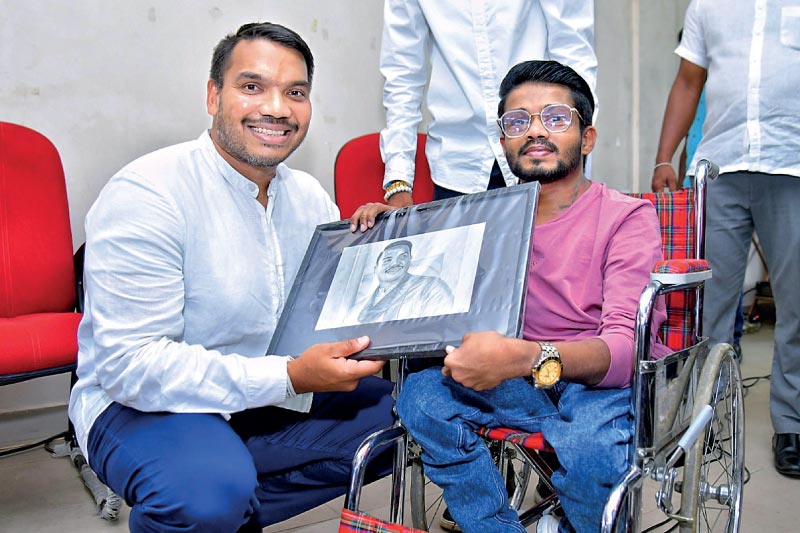
Has authentic appeal
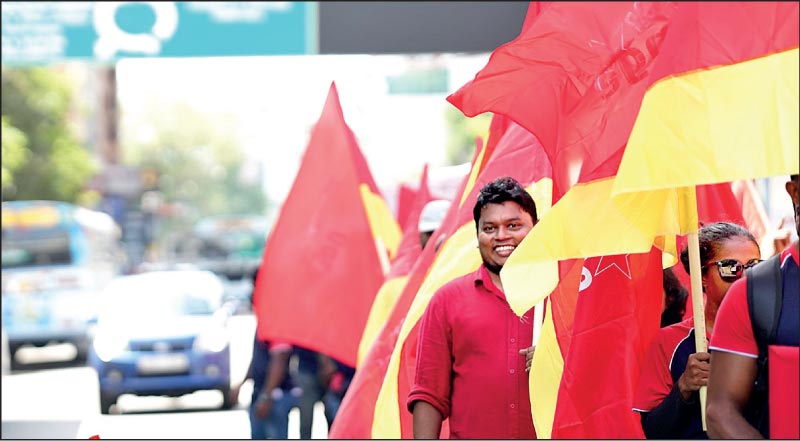
Aragalaya hero Wasantha Mudalige, FSP May Day
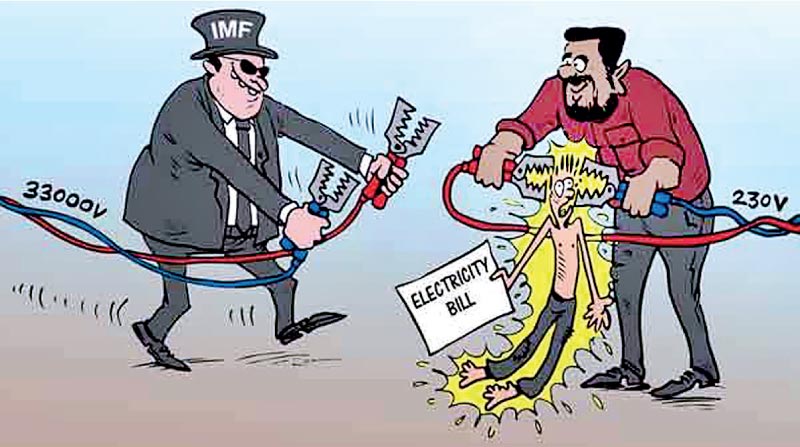
Pragmatic AKD-NPP shock therapy